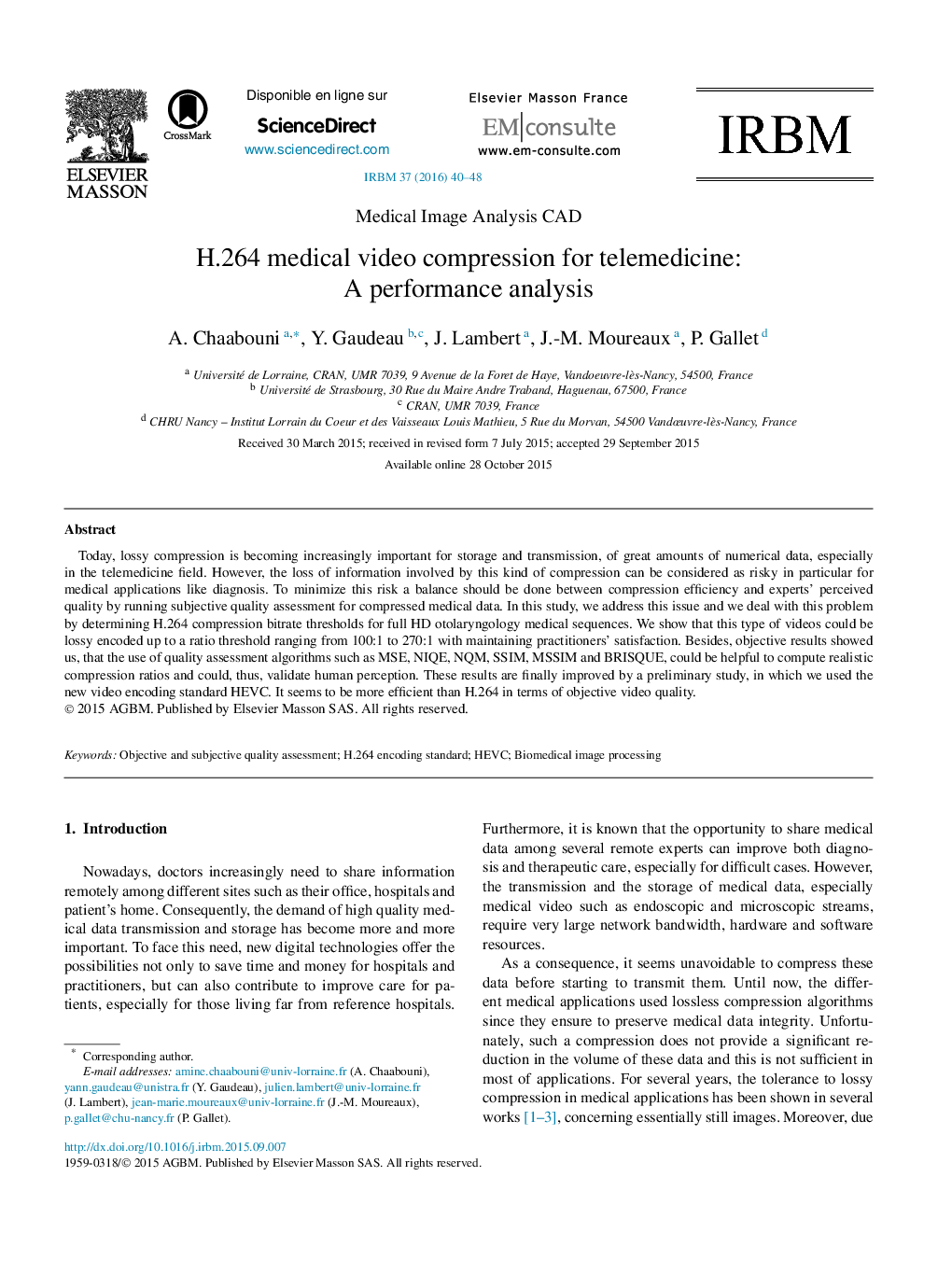| Article ID | Journal | Published Year | Pages | File Type |
|---|---|---|---|---|
| 870745 | IRBM | 2016 | 9 Pages |
Today, lossy compression is becoming increasingly important for storage and transmission, of great amounts of numerical data, especially in the telemedicine field. However, the loss of information involved by this kind of compression can be considered as risky in particular for medical applications like diagnosis. To minimize this risk a balance should be done between compression efficiency and experts' perceived quality by running subjective quality assessment for compressed medical data. In this study, we address this issue and we deal with this problem by determining H.264 compression bitrate thresholds for full HD otolaryngology medical sequences. We show that this type of videos could be lossy encoded up to a ratio threshold ranging from 100:1 to 270:1 with maintaining practitioners' satisfaction. Besides, objective results showed us, that the use of quality assessment algorithms such as MSE, NIQE, NQM, SSIM, MSSIM and BRISQUE, could be helpful to compute realistic compression ratios and could, thus, validate human perception. These results are finally improved by a preliminary study, in which we used the new video encoding standard HEVC. It seems to be more efficient than H.264 in terms of objective video quality.
